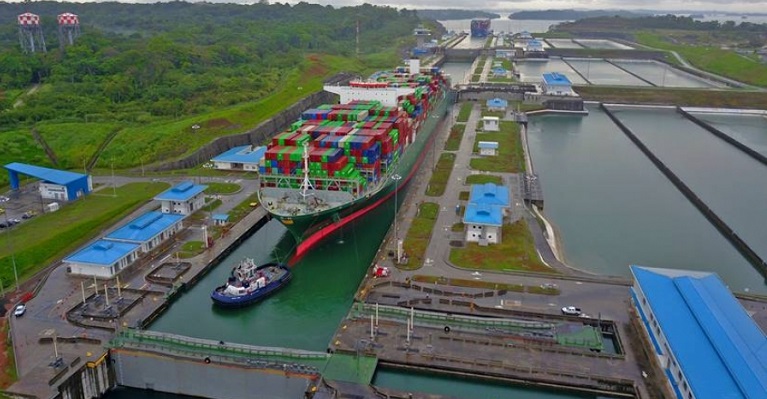The Platts KMAX 9 Index, which tracks the earnings of Kamsarmax class bulk carriers, collapsed to below previous years’ levels in the third quarter, driven by the perpetually overtonnaged Atlantic basin and a summer-induced slump in demand for dry bulk commodities. This occurred despite a resilient Atlantic Panamax market in Q2, with earnings remaining above last year’s levels, and market sources had expected this performance to continue into Q3.
The Platts KMAX 9 is a weighted average global shipping index of nine key Panamax routes.
The Atlantic Panamax markets entered Q3 quietly, with sentiment drifting across the basin due to elusive demand in the north, scarce inquiries in the south, and an uptick in tonnage weighing down both regions. Brief optimism sparked by market chatter of Capesize splits quickly faded as paper movements in freight erased any gains.
On July 8, Platts, part of S&P Global Commodity Insights, assessed the 70,000 mt Hampton Roads-Rotterdam coal route at $13/metric ton, reflecting a time charter equivalent of roughly mid-$10,000s/d — marking a notable decline not seen since early June. However, by mid-July, rates had rebounded, driven by stronger fronthaul fixing activity, a slight increase in demand, and a thinning tonnage list in the north. The 2023-built, 85,000 dwt Golden Star was fixed for a USEC-China trip at $29,000/d, while the 2023-built, 82,000 dwt Katagalan Brave was heard fixed for a USEC-India trip at $31,000/d. On July 26, the route peaked, with Platts assessing it at $15/mt and a TCE of roughly mid-$15,000/d.
In the south, initial cargo focus was on end-July laycans, with a persistent disparity between rates for end-July and early August loading, the latter trading at a slight discount. As July laycans found cover, rates faltered due to a lack of new cargoes entering the market. This forced first-half August loaders to accept discounted rates below the last-done levels to secure cover, while second-half loading for ECSA grain cargoes commanded a slight premium. On July 29, Platts assessed the 60,000 mt Santos-Qingdao grain route at $46.75/mt, with TCE peaking in the high $17,000s/d. By August, demand for September-loading vessels from the Eastern Coast of South America remained limited, leading to a significant increase in ballasting vessels by mid-month.
Tonnage surge vs cargo shortfall
In the northern region, freight rates weakened due to a shortage of cargo volumes for both transatlantic and fronthaul routes, despite a relatively short tonnage list. Furthermore, news of a shiploader collapse at a coal terminal in Baltimore raised concerns about significant delays and the potential release of extra spot tonnage originally destined for the port. This disruption, coupled with a summer downturn in demand, deteriorating tonnage fundamentals, and holidays in Europe and Asia, exerted additional pressure on rates, pushing the already fragile market to a tipping point.
Both grain and coal freight experienced a steady decline, reaching a low in mid-September before showing signs of recovery. According to S&P Global Commodities at Sea, transatlantic mineral cargoes recorded a notable increase of 50% compared with the previous quarter and a 19% rise compared with Q3 2023. Meanwhile, ECSA agribulk shipments saw a 13% increase from the previous quarter, along with a 14% rise compared with Q3 2023.
Last pillar of support
Towards the end of August, demand appeared strong for Eastern Coast of South America loading dates in mid to late September. However, the long list of ballasting vessels put pressure on fronthaul freight rates from the adjacent US Gulf region. By September, as shipowners shifted their focus toward the US Gulf grain season, activity in that area fell short of expectations due to South Atlantic tonnage oversupply and delays in US grain exports.
One source said that “rates continued to fix below previous levels in the US Gulf, cutting off a much-needed injection of demand in the Atlantic and limiting any potential for further recovery. A final lifeline could be an increase in cargo volumes from ECSA to clear the backlog of accumulating ships in the South Atlantic, turning the tide in their favor. However, this prospect seemed increasingly unlikely as the list of ballasters bloated, negatively impacting sentiment for early October and further dampening any remaining optimism in the market.”
On Sept. 6, Platts assessed the Santos-Qingdao grains route at $38.25/mt, with the TCE sinking to its lowest point, around the low $12,000s/d.
Q4 outlook: Gains through US grains
“Brazil’s recent record corn output has allowed the country to offer competitive prices, making it China’s largest trading partner,” one source said. “However, high export premiums and reduced global competitiveness are now shifting China’s attention toward US corn. That said, I don’t expect this preference for US corn over Brazilian corn to be a long-term trend. With no major weather disruptions anticipated in the short-term forecasts, Brazilian prices could become more competitive again if the country achieves strong output towards the end of the 2024-25.”
A second source added that “the drop in US corn demand for domestic ethanol production, coupled with concerns over dry weather in Brazil that could delay soybean planting, has kept sentiment for US corn cargoes strong. Hurricane Francine and Helene brought rain to the US Corn Belt, causing only minor delays, while providing relief to the Mississippi River waterways. Logistical complications due to low water levels have increased the cost of moving corn from the Midwest to the Gulf Coast. Additionally, concerns about low water levels in northern Brazilian rivers, which flow into the port of Barcarena and compete with US Gulf-origin shipments, is bullish for US Gulf grain.”
However, the first source countered, saying: “The USDA, in their September Grain Stocks report, has lowered expectations for overall grain output, while the IGC has also reduced its grain production forecast by 0.3%. This year has seen frontloaded grain demand, and despite rising water levels in the Mississippi, which could aid navigation through October, this period is historically not the strongest season for grains. Nevertheless, delays in US Gulf exports and Q4’s typical higher ton-mile demand should provide some support to the Atlantic Panamax market, though it will likely be tempered.”






